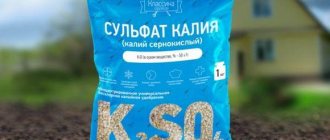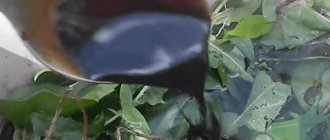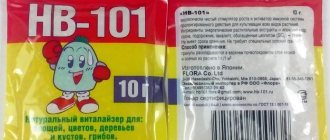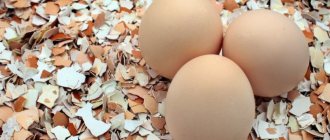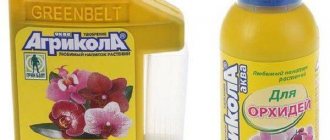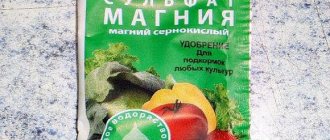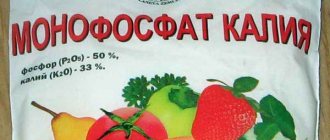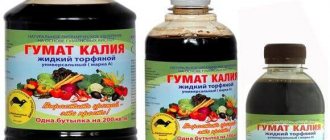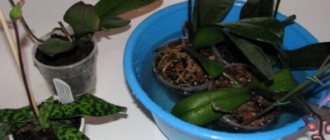Category: Mineral fertilizers Reading time: 9 min · Views: 18,506
Ammonium nitrate is used in 80% of large agricultural farms. This demand is due to the fact that the fertilizer has a beneficial effect on plants even in cold weather and when the soil is severely frozen. Ammonium nitrate is a universal fertilizer that is suitable for almost all plants in agriculture.
Ammonium nitrate: properties of fertilizer
Main properties of ammonium nitrate:
- high efficiency of the drug - its consumption per 1 hectare of garden area is no more than 1 kg;
- if an excessive amount of lime was added to the soil, this saltpeter will acidify the soil;
- the substance dissolves perfectly in water without forming sediment;
- Ammonium nitrate contains nitrogen in two forms - with a rapid dissolution period and an extended one;
- the temperature characteristics of the soil do not affect the absorption of nitrogen by the root system of plants, so this preparation can be applied immediately after the snow melts;
- Almost all applied fertilizer is absorbed by the plant, its losses in the soil are minimal, so it does not need to be embedded into the soil to a depth.
Description of fertilizer - video
In addition, the cost of ammonium nitrate is not too high compared to most fertilizers, which makes the drug very attractive to farmers.
But you should remember some of the disadvantages of this drug:
- it cannot be used as a foliar fertilizer, since the ammonium nitrate solution severely burns the foliage even in a small concentration;
- This fertilizer cannot be applied to acidic soil;
- Failure to comply with the dosage and exceeding it lead to burns of the root system; fertilizing should be done after watering or rain.
Photo of ammonium nitrate - what the fertilizer looks like
Fertilizing should be applied according to the schedule - for most vegetable plants, a single application of ammonium nitrate per season is sufficient
. Instead, you need to add drugs containing potassium and phosphorus.
Ammonium nitrate is a very strong fertilizer; exceeding its dosage when applied to the soil can lead to an increase in the amount of nitrates in fruits
. However, nitrates can be washed out of the soil by heavy watering or during rainy periods.
Ammonium nitrate - formula and composition of fertilizer
This substance is a white powder or granules with a yellowish tint. Granulated ammonium nitrate has the same properties as powder, but decomposes a little more slowly in the soil.
This drug has other names:
- nitric acid salt;
- Ammonium nitrate.
Ammonium nitrate formula: NH4NO3
. Some manufacturers add sulfur to its composition, which is also required by cultivated plants for active growth. The percentage of this trace element in ammonium nitrate is up to 13%.
Table:
There are several varieties of this drug, depending on the additional elements included in its composition:
- Indian saltpeter
- in addition to active nitrogen, it also contains potassium. As a result, this fertilizer, when applied to the soil, simultaneously promotes the growth of vegetative mass by the plant, and also prepares it for active budding and ripening of fruits. - Norwegian
- it contains carbonate (like lime), magnesium and potassium. During the production process of the drug, its granules are exposed to petroleum products, which break down for a long time in the soil. As a result, nutrients are supplied to the soil in portions over a long period. - Ammonium nitrate B
, which contains nitrogen, sulfur, magnesium, calcium, potassium. - Magnesium
, in this preparation magnesium ions are part of the crystal lattice of the substance. - Ammoniated calcium nitrate
. This fertilizer can be applied to almost all cultivated plants, fruit trees and shrubs. The drug prevents soils from acidifying, maintaining their neutral or slightly acidic reaction.
Operating principle
Usually, summer residents know what ammonium nitrate is, they know the properties of fertilizer, and they successfully apply fertilizer on the site. The substance is a source of nitrogen, applied in dry form or as an aqueous solution under the root.
In the soil, as a result of interaction with soil bacteria, ammonium salt is converted into a form accessible to plants and is intensively absorbed by the roots. This gives:
- rapid growth and increase in green mass;
- stimulating the appearance of young shoots;
- acceleration of the budding phase;
- increasing productivity indicators.
It is important not to exceed the fertilizer consumption rate, take into account the condition of the crops, soil composition, climatic conditions (precipitation, snowmelt), and act strictly according to the instructions.
Ammonium nitrate application rate
In the spring, ammonium nitrate in powdered or granular form can be added to the planted seedlings of any vegetable crops.
, 5-10 g of the drug should be used per square area. Typically, fertilizer is applied 12-15 days after transplanting seedlings into open ground, or 18-21 days after sprouts appear.
Before planting root crops in the prepared beds, pour up to 30 g of the drug per square area
. If the soil is severely depleted, then the dose of ammonium nitrate should be increased to 50 g per 1 m2.
For fruit bushes, the dosage of applying nitric acid salt is up to 18 g per 1 m2
. The fertilizer is scattered around the tree trunk after digging.
Fertilizer application rates for various crops of ammonium nitrate - video
To feed fruit trees, 24-28 g of the drug is diluted in a bucket of water and poured into the tree trunk in the spring after flowering.
. After about a month, fruit trees are re-fertilized with this fertilizer.
Important!
After plants or fruit trees and shrubs have been fed with ammonium nitrate solution, they should be watered with plain water so that the root system does not burn.
How else can you use it?
Ammonium nitrate can be used not only as a fertilizer, but also in everyday life, in the fight against various pests and weeds.
From weeds
Ammonium nitrate in high concentrations has the ability to damage plant roots and slow down their growth. That is why it is used in weed control. In addition, it is harmless to humans, as it quickly disappears and not a trace remains of it.
To do this, you need to make a solution of a highly concentrated drug: 3 kg of saltpeter per 10 liters of water. This killer liquid is sprayed and spilled on areas where unnecessary grass grows. It is advisable to do this in dry, hot, windless weather, so that the solution lingers longer in the soil and on the greenery of the weed.
From ants
Ammonium nitrate is also effective in the fight against ants. To do this, you need to sprinkle the anthill with granules of the drug, and after a while the insects will leave their home. The second way is to make a solution of ammonium nitrate and pour it well into the ants’ habitat. They will also leave this place.
From the wireworm
Wireworms pose a particular danger to potatoes in the garden. He gnaws through it, making various moves in it. They get rid of it using ammonium nitrate, since the worm does not tolerate the smell of ammonia.
There are two ways to do this. The first is that before planting potatoes, the drug is placed in the holes at the rate of 25 g per 1 m2. If the wireworm was noticed in the summer, it is recommended to water the beds with a solution in a proportion of 3 g per 1 liter.
For septic tank
Special products for septic tanks based on ammonium nitrate decompose complex organic substances, eliminate unpleasant odors and reduce the volume of wastewater. The approximate consumption of such drugs is 750 g per tank volume of 1500 liters. In time it is approximately 30-40 days.
To remove stumps
Ammonium nitrate is used to destroy stumps without uprooting them. To do this, you need to drill holes in the stump with a diameter of about 1 cm at a distance of about 10 cm from each other. Pour ammonium nitrate granules into the holes, level with the edges of the holes. It is good to pour the stump so that the product settles. Each hole must be closed with a plug at the top. It can be plasticine, wood or clay.
The stump is left for 1 - 2 years so that the drug can be absorbed into the structure of the tree. After time, the stump is dug around the circumference and a fire is made. The stump burns completely.
The use of ammonium nitrate in the garden
Ammonium nitrate
– one of the most popular fertilizers among gardeners and gardeners in the spring and early summer, which is used to ensure that cultivated plants actively increase their vegetative mass.
In summer and autumn, nitrogen-containing fertilizers (including ammonium nitrate) should not be applied to the soil.
In this case, plants and trees will only grow green mass, stems and shoots. Shoots and branches on trees and shrubs that grow in mid- and late summer do not have time to become woody before the cold weather begins and simply freeze out in winter.
Below we will describe for which vegetable and garden crops ammonium nitrate is used.
Application of ammonium nitrate - video
Ammonium nitrate for vegetable seedlings
Ammonium nitrate is rarely used to feed vegetable seedlings. Most often, liquid organic fertilizers and urea are applied to seedlings (with an interval of 10-12 days).
But, for example, ammonium nitrate is necessarily used to feed tomato seedlings. For the first time, these seedlings are fertilized with a solution of mullein, and after 12-14 days you can add a solution of nitrate, diluting 15-20 g of the drug in a bucket of water. This amount of solution is used to apply 3 m2 of crops.
Ammonium nitrate for tomatoes
Nitrogen is needed by young tomato bushes so that they actively grow green mass and strengthen the stems
. Ammonium nitrate contains about 34% of this macroelement, so it can be used as the main fertilizer in the spring, as well as as part of a complex fertilizer in combination with potassium salt and superphosphate.
Ammonium nitrate is also added to planting holes (1 tbsp) when planting tomatoes in a permanent place. Also, 5 g of this nitrogen fertilizer is sprinkled on each m2 during the period of active flowering.
The use of ammonium nitrate for cucumbers
Ammonium nitrate is added to the soil before planting cucumber seeds or their seedlings in a permanent place in the garden. It should be buried about 8-10 cm into the soil for spring digging. Many vegetable growers simply scatter this fertilizer around the garden during the period of massive snow melting.
During the period of growth of cucumber vines before flowering, you can water them with a solution of ammonium nitrate, diluting 15-20 g of the drug in a bucket of water.
It is important to know!
However, experts warn that this crop actively accumulates nitrates in its fruits, so ammonium nitrate should be applied under it with great caution and in no case exceed the doses specified in the instructions for use.
Ammonium nitrate for potatoes
Before planting potato tubers in holes, add 1 tbsp. l. Ammonium nitrate. Subsequently, after 18-20 days, the dry preparation should be scattered over the area at the rate of 5 g per square area.
Fertilizing potatoes with ammonium nitrate - video
Fertilizing strawberries with ammonium nitrate
Before planting strawberries in a permanent place, compost or humus is added to the prepared beds at the rate of at least 5 kg per 1 m2. In the first year after planting this berry crop, it is not recommended to apply nitrogen-containing fertilizers, because they provoke rotting of the strawberry bushes.
Starting from the second season in the spring, ammonium nitrate should be added to strawberry beds.
. The application rate of the drug is 100 g per 1 m2 of area. Trenches 10 cm deep are dug along the rows, into which nitrogen fertilizer is poured in an even layer, the furrows are leveled with a rake and watering is carried out.
Next season, strawberries are fertilized with complex fertilizer, which contains per 10 m2:
- phosphorus – 100 g;
- potassium salt – 100 g;
- ammonium nitrate – 110-140 g.
This composition is applied to the beds during the period of green mass appearance, as well as after harvesting ripe fruits.
Instead of dry fertilizer in the spring, you can fertilize with ammonium nitrate solution
. To do this, dilute up to 30 g of fertilizer in a bucket of water and carefully water the bushes strictly at the root.
Ammonium nitrate for root vegetables: beets, carrots, etc.
When preparing beds for planting root crop seeds, ammonium nitrate is applied to the furrows that are made between the rows. This fertilizer is added to them in dry form.
Ammonium nitrate for fruit trees: apple, pear, plum, apricot, peach and others
In the spring, when the snow has completely melted, it is time to feed all fruit trees and shrubs.
. During this period, cultivated plants in the garden need fertilizers containing nitrogen.
Nitrogen nitrate should be applied to the tree trunks of fruit trees several times during the summer.
.
Prepare the solution as follows: dissolve up to 30 g of the drug in a bucket of water. This proportion is the most optimal and saturates the soil with a sufficient amount of nitrogen. Watering with ammonium nitrate is carried out strictly in the tree trunk circles, preventing the drug from getting on the bark and vegetative mass of the trees.
Fruit trees are fertilized at least 3 times per season with an interval of 18-20 days.
Description of fruit tree varieties!
Apricot Northern Triumph Plum Study Apricot Royal Peach Redhaven
Fertilizing berry bushes with ammonium nitrate (raspberries, honeysuckle, currants, blackberries, gooseberries)
You can also apply this preparation to fruit bushes several times a season, but strictly “at the root.”
. For gooseberry and currant bushes up to 3 years old, the rate of application of this fertilizer is up to 30 g per square. During the period of active ripening of berries, the consumption of ammonium nitrate should be up to 50 g.
Spring feeding of these shrubs with ammonium nitrate can be carried out even in the snow.
But it is better to carry it out after the snow has melted, and bury the fertilizer into the soil to a depth of 9-11 cm.
Fertilizing garlic with ammonium nitrate
Garlic, like many other root vegetables, really needs nitrogen, which promotes the active germination of cloves.
Fertilizing garlic in spring using ammonium nitrate - video
Ammonium nitrate is applied to the beds with garlic in the spring at the rate of 1 tbsp. l. drug per square area. Or you can prepare a solution of ammonium nitrate according to the instructions for use (up to 30 g per bucket of water). Fertilizing garlic with ammonium nitrate in the spring is carried out in the snow.
You can also apply this fertilizer under garlic in the fall - before the onset of cold weather.
Ammonium nitrate for flowers
Ammonium nitrate is also actively used in gardening, adding it in the spring in order to stimulate foliage growth.
For perennials, granules of the drug are applied during the snow melting period - in this case, the fertilizer reaches the roots faster along with the melted snow. In this case, additional watering of the plants is not required - due to the large amount of melt water, the flower roots will not be burned by the preparation.
In mid-spring, when the flowers begin to actively grow, it is better to feed them with a solution of ammonium nitrate (up to 2 tablespoons per bucket of water), in this case the nutrients will flow to the roots evenly.
When the first buds appear on flowering plants, fertilizing with ammonium nitrate is stopped, otherwise the vegetative mass of these crops will continue to increase to the detriment of flowering. Because of this, aphids may appear more actively on the bushes.
FUNGICIDES for the GARDEN AND VEGETABLE VEGETABLE!
Bordeaux mixture Fungicide Antracol
Ammonium nitrate for roses
“Queens of flowers” require ammonium nitrate no less than other cultivated plants during the period of active growth. Therefore, this fertilizer with a large amount of nitrogen is applied for the first time at the end of April or beginning of May after the spring sanitary pruning of the bushes has been carried out.
Varieties of beautiful roses!
Rose Gloria Day climbing Rose floribunda climbing Rumba Yellow rose floribunda Arthur Bell
To do this, dilute this drug in a bucket of water (the norm is 1 tbsp.). Other fertilizers should be added to this solution - superphosphate and any potassium salt. Approximately 6 liters of this liquid fertilizer is applied to each plant.
. These complex fertilizers first of all activate the growth of roots, which will serve as an impetus for the start of sap flow.
After 2-3 weeks, similar feeding should be repeated in order to activate the appearance of buds
. After the first flowers begin to appear on the rose bushes, ammonium nitrate is no longer added, otherwise the vegetative mass, including young shoots, will continue to grow, and flowering will be inactive (or buds will not appear at all).
Ammonium nitrate for lawn
After winter, the lawn grass does not look very attractive - some freezes, some dried grass remains, and there is very little fresh greenery. But after a month and a half, young greenery comes from the roots. And all dried and frozen grass should be removed during spring cleaning in the garden.
To activate the growth of green mass, it is recommended to add ammonium nitrate to the lawn.
. The consumption of this granular fertilizer is no more than 40 g per 1 m2. All granules are evenly distributed over the surface of the earth, then abundant watering is carried out.
Important!
You cannot increase the dosage of the drug, otherwise you can burn all the roots of the lawn grass.
The use of ammonium nitrate for indoor plants
Not every indoor plant needs to be fertilized with ammonium nitrate, so in each specific case, before applying this drug, you need to read the literature about what specific fertilizers your flowers need.
This nitrogen fertilizer is best suited for long-growing indoor plants - palm trees, ferns, as well as other ornamental crops, the main advantage of which is foliage
. After all, the main property of nitrogen is the ability to give impetus to the development of the above-ground parts of plants (shoots, foliage).
Usually, all fertilizers for indoor flowers are applied in liquid form, and saltpeter is no exception.
. Usually no more than 2 tbsp is diluted in a bucket of water. l. Saltpeter, and for each plant an amount of liquid fertilizer is applied, proportional to the capacity of the pot or flowerpot.
Foliar feeding with ammonium nitrate
Foliar feeding of any vegetable plants, flowers (including indoor flowers), fruit trees and shrubs is usually not carried out, since the solution of this drug is quite concentrated and causes burns to the leaf blades
. Because of this, plants get sick for a long time and often die.
Some summer residents still carry out leaf feeding of some cultivated plants, but the amount of ammonium nitrate in the solution should not be more than 0.25 g per 1 liter of water. In a private household, it is extremely difficult to measure such an amount of the drug.
Nitrogen fertilizers for the garden - video
Fertilizing with ammonium nitrate
Fertilizing of fruit trees, flowers, roses, lawns and indoor flowers is also carried out carefully, avoiding exceeding the dosage of this drug. Fruit trees and shrubs have the ability to accumulate nitrates in ripening fruits, which negatively affects human health.
The best fertilizers for the vegetable garden!
Epin Extra Potassium Nitrate Superphosphate Potassium Monophosphate
The use of ammonium nitrate in gardening allows you to increase the volume of vegetative mass, improves flowering and fruiting, but strict adherence to the rate of application of the drug to the soil is required.
Questions from gardeners and gardeners
Below are the most frequently asked questions from readers about this nitrogen fertilizer, along with their answers.
Why is ammonium nitrate needed?
Ammonium nitrate is needed to enrich the soil with nitrogen, which is needed by all cultivated plants in the garden to increase vegetative mass.
What is the chemical formula of ammonium nitrate?
The chemical formula of this drug is NH4NO3.
How much nitrogen is in ammonium nitrate?
This drug contains approximately 34% nitrogen.
Are urea and ammonium nitrate the same thing?
Urea (or carbamide) and ammonium nitrate are completely different fertilizers, the main advantage of which is their high nitrogen content. And if the first preparation contains up to 46% nitrogen, then ammonium nitrate contains only up to 34% of this mineral element.
Urea can be used to apply root and leaf fertilizers, while ammonium nitrate is applied only to the soil.
Urea takes longer to be absorbed by plants, and ammonium nitrate has the ability to be absorbed more quickly by the root system of plants.
Description of urea and ammonium nitrate - pros and cons
What is the price of ammonium nitrate?
The cost of 1 kg of ammonium nitrate is about 13-14 rubles per 1 kg.
What is the composition of ammonium nitrate?
This chemical contains nitrogen, hydrogen, and oxygen. Sulfur, magnesium, potassium, and calcium are often added to ammonium nitrate.
How many grams of ammonium nitrate are in a tablespoon?
One tablespoon contains approximately 13 g of this drug.
How to replace ammonium nitrate for fertilizing?
Ammonium nitrate can be replaced with any other drug containing approximately the same amount of nitrogen in its composition.
How much ammonium nitrate is in a matchbox?
A matchbox can contain no more than 20 g of ammonium nitrate.
Ammonium nitrate or azofoska - which is better?
It is impossible to say unequivocally that one of these fertilizers is better or worse. It’s just that ammonium nitrate contains only easily digestible nitrogen, so it is used only in the spring and early summer.
And azofoska contains all the main components necessary for plants to grow and develop fruits - potassium, phosphorus and nitrogen. Therefore, this fertilizer can be used for application to garden and vegetable crops throughout the spring and summer season.
Where to buy ammonium nitrate?
You can purchase ammonium nitrate in any specialized store, or order it online.
Urea (urea) or ammonium nitrate - which is better?
Urea contains 2 times more digestible nitrogen than ammonium nitrate, so the nutritional properties of 2 kg of urea are equal to 6 kg of ammonium nitrate.
In addition, urea can be used for foliar feeding when plants require urgent nitrogen application, otherwise they may die.
Which is better ammonium nitrate or urea - video
What brands of ammonium nitrate are there?
There are only two brands of this fertilizer: A and B.
What is the hazard class of ammonium nitrate?
This drug is classified as hazard class 5; it does not ignite in direct contact with fire, but can explode - it decomposes at high ambient temperatures and releases oxygen.
Overdose
Excessive amount of nitrogen in tomato
Exceeding fertilizing norms causes an imbalance in the content of mineral elements in the plant. If moderate fertilizer leads to increased yield and durability, then disproportionate, thoughtless application or incorrect combination of substances, on the contrary, causes the accumulation of too much of one nutrient element to the detriment of the digestibility of another.
Excess nitrogen causes the growth of succulent, thick stems. Flowering and fruiting are delayed. Tissues lose elasticity, potassium absorption decreases. The tips of the leaves curl, and necrosis begins between the veins - the death of the tissue of the plate. Initially, large leaves of a rich green hue (see photo) curl, the plant receives so-called ammonia poisoning.
The fruits do not ripen for a long time, fall off early, and are not stored. Strawberries are affected by gray rot.
Nitrogen fertilizing from the second half of summer worsens winter hardiness and contributes to the accumulation of nitrates. Fruit trees and shrubs may experience active growth of young shoots at the end of the season. When night temperatures drop in the fall, these growths are affected by fungal diseases, which often leads to the death of the plants.
Accumulation of nitrates will also occur with an excess of organic nitrogen - with frequent fertilizing with manure and bird droppings. Any use of chemicals - organic and inorganic - in everyday life should be reasonable and moderate. 14-20 days before harvesting, stop using any fertilizers.
Interestingly, nitrogen can be present in the soil in sufficient quantities, but not available to plants. The conditions for this are: low temperature, dense soil, lack of the required number of beneficial soil microorganisms (soil dysbiosis), the use of sawdust for preparing substrates, lack of moisture.
Ammonium nitrate - reviews from gardeners and gardeners
Natalya, 55 years old, Kazan: I use this fertilizer to feed my fruit trees in spring and summer. I also apply ammonium nitrate to gooseberries, currants and strawberries, but only in the spring. I buy small packages of this drug and usually use them in one season so as not to leave them for the next year.
Olga, 49 years old, Volgograd: I use ammonium nitrate to feed most vegetable crops and root crops during the spring. As a result, all my plants are green and strong. I am also pleased with the cheap price of this fertilizer.
You can use ammonium nitrate in your garden and garden throughout the spring.
The undeniable advantage of the drug is that it can even be scattered on the snow, and it will be absorbed immediately into the soil, and will not flow away with melt water. The low cost and optimal amount of easily digestible nitrogen in this fertilizer are also advantages of ammonium nitrate.
Recently searched:
Storage
Particularly important is the question of the places and conditions in which fertilizers are stored. Ammonium nitrate is an explosive substance, so bags with granules or powder are placed in cool rooms equipped with ventilation systems. The permissible temperature is not higher than +30 ºC to prevent fire and reduce the risk of explosion.
Since the drug is highly hygroscopic, only moisture-proof packaging is used for storage. The container must be hermetically sealed, otherwise some of the useful components will evaporate.
It is prohibited to store this fertilizer in close proximity to petroleum products, acid compounds, peat, sawdust, wood, paper, straw. Also, saltpeter should not be kept under shelters or in the open air to avoid heating under the sun.
Summer residents usually purchase fat in small (1-2 kg) packages. It is necessary to ensure correct storage conditions, to exclude the possibility of ignition of the substance, and to comply with safety requirements.



